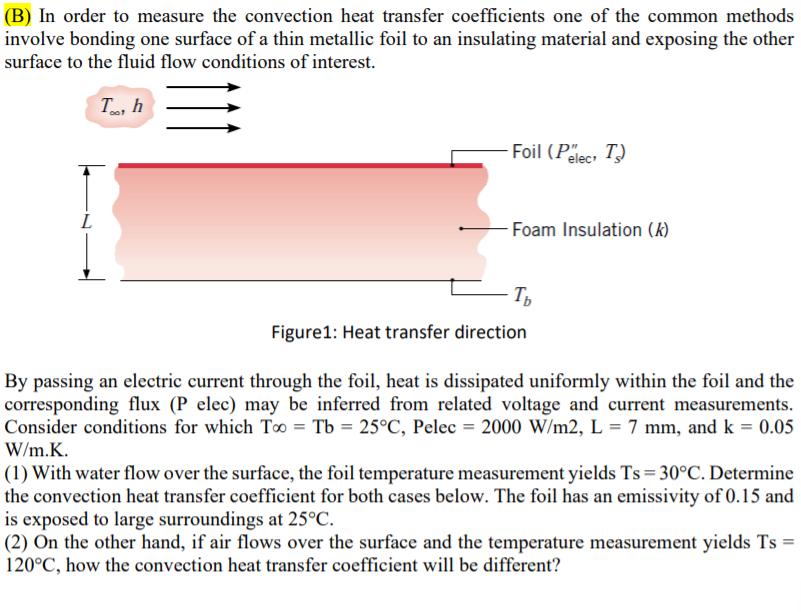(B) In order to measure the convection heat transfer coefficients one of the common methods involve bonding one surface of a thin metallic foil to an insulating material and exposing the other surface to the fluid flow conditions of interest.
(B) In order to measure the convection heat transfer coefficients one of the common methods involve bonding one surface of a thin metallic foil to an insulating material and exposing the other surface to the fluid flow conditions of interest.
Principles of Heat Transfer (Activate Learning with these NEW titles from Engineering!)
8th Edition
ISBN:9781305387102
Author:Kreith, Frank; Manglik, Raj M.
Publisher:Kreith, Frank; Manglik, Raj M.
Chapter8: Natural Convection
Section: Chapter Questions
Problem 8.50P
Related questions
Question

Transcribed Image Text:(B) In order to measure the convection heat transfer coefficients one of the common methods
involve bonding one surface of a thin metallic foil to an insulating material and exposing the other
surface to the fluid flow conditions of interest.
T, h
Foil (Pelec T)
Foam Insulation (k)
Figure1: Heat transfer direction
By passing an electric current through the foil, heat is dissipated uniformly within the foil and the
corresponding flux (P elec) may be inferred from related voltage and current measurements.
Consider conditions for which T0 = Tb = 25°C, Pelec = 2000 W/m2, L = 7 mm, and k = 0.05
W/m.K.
(1) With water flow over the surface, the foil temperature measurement yields Ts = 30°C. Determine
the convection heat transfer coefficient for both cases below. The foil has an emissivity of 0.15 and
is exposed to large surroundings at 25°C.
(2) On the other hand, if air flows over the surface and the temperature measurement yields Ts =
120°C, how the convection heat transfer coefficient will be different?
Expert Solution
This question has been solved!
Explore an expertly crafted, step-by-step solution for a thorough understanding of key concepts.
This is a popular solution!
Trending now
This is a popular solution!
Step by step
Solved in 3 steps with 5 images

Knowledge Booster
Learn more about
Need a deep-dive on the concept behind this application? Look no further. Learn more about this topic, mechanical-engineering and related others by exploring similar questions and additional content below.Recommended textbooks for you

Principles of Heat Transfer (Activate Learning wi…
Mechanical Engineering
ISBN:
9781305387102
Author:
Kreith, Frank; Manglik, Raj M.
Publisher:
Cengage Learning

Principles of Heat Transfer (Activate Learning wi…
Mechanical Engineering
ISBN:
9781305387102
Author:
Kreith, Frank; Manglik, Raj M.
Publisher:
Cengage Learning